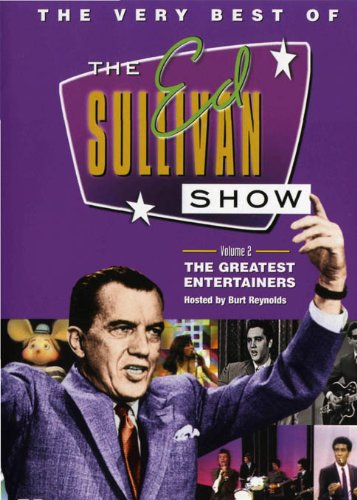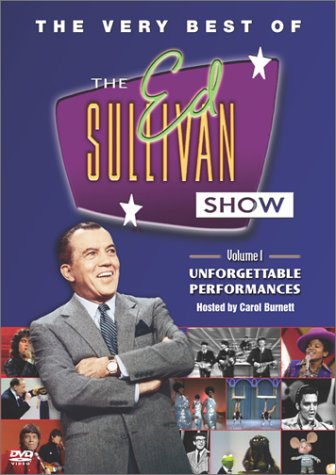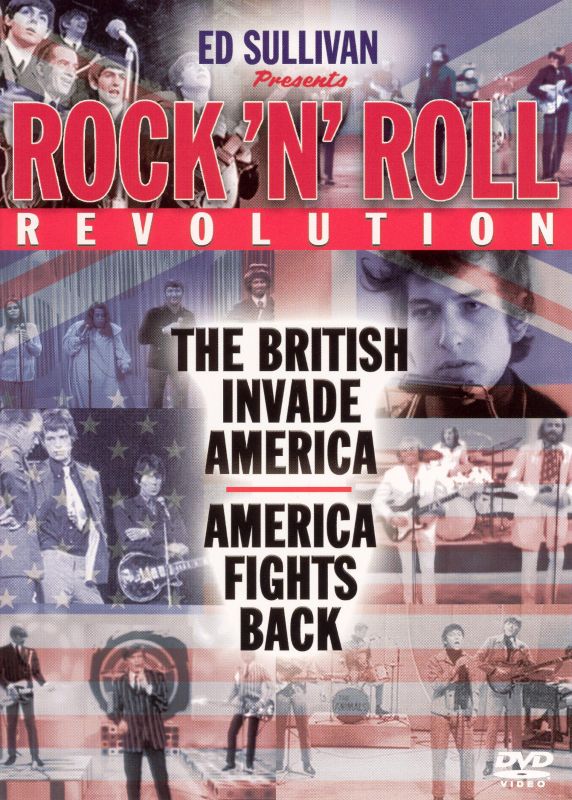Known as “The World’s Greatest Rock and Roll Band,” The Rolling Stones have been the bad boys of Rock ‘n’ Roll for five decades. The Beatles on Ed Sullivan started the British Invasion, and The Stones elevated it. They were the antithesis of The Beatles. While The Beatles were cute and beloved by teenagers and their mothers, The Rolling Stones were wild, edgy and somewhat threatening. Where The Beatles tried to avoided controversy, The Rolling Stones seemed to revel in it. When The Rolling Stones arrived for their first tour in the USA, headlines read, “Would You Let Your Daughter Marry a Rolling Stone?” Their manager, Andrew Loog Oldham, was a gifted promoter and publicity shaper. He saw the long-term benefit in molding the group’s image to be opposite that of The Beatles. The Stones brooding blues-rock music and aggressive lyrics paired with lead singer Mick Jagger’s charisma and sexually charged onstage act pushed cultural boundaries and forever changed popular music.
The Rolling Stones’ story began in 1960 when childhood friends Mick Jagger and Keith Richards bumped into one another while attending different colleges in London, England. With a mutual adoration of R&B performers like Chuck Berry and Muddy Waters, Jagger and Richards began listening to American music and then playing it together regularly. They assembled the other members of the band while playing in London blues clubs. By December 1962, the lineup was complete with vocalist Mick Jagger, guitarists Keith Richards and Brian Jones, pianist Ian Stewart, bassist Bill Wyman and drummer Charlie Watts.
The band’s name was rumored to have been chosen when Brian Jones placed an advertisement for a show in a jazz periodical. Needing to have a band name for the ad, Jones saw a Muddy Waters album lying on the floor and picked the track titled, “Rollin’ Stone.” The band later tweaked the name to The Rolling Stones.
Influenced by artists like Bo Diddley and Willie Dixon, the band played a mix of Chicago blues and R&B. With the Beatles garnering international fame, London was undergoing a social revolution. Known as “Swinging London,” its fashion and music went through a renaissance, and the popularity of the blues and other styles of music grew tremendously.
The Rolling Stones became an established act in the greater London club scene. In 1963 Decca Records, which had recently made the regrettable and costly mistake of not signing The Beatles when given the chance, jumped at the opportunity to sign The Stones. Coincidently, it was George Harrison who recommended the record label take a look at the band.
Their first single, a cover of Chuck Berry’s “Come On,” was a moderate success reaching #21 on the UK charts. The Stones were able to parlay that success with a booking as a supporting act on a 1963 UK tour featuring Bo Diddley, Little Richard and The Everly Brothers. On the road with a number of their musical idols, The Rolling Stones shaped and refined the stage act for which they would later become famous.
The following year, having released multiple singles and a self-titled album, The Rolling Stones set off on a US tour. Unlike The Beatles, who waited until they had a Number One hit before invading America, The Stones arrived stateside in 1964 with few record sales. American teens were still under the spell of “Beatlemania,” and The Rolling Stones’ tour attracted little fanfare. As Stones bassist Bill Wyman put it, “[It was] a disaster. When we arrived, we didn’t have a hit record or anything going for us.”
However, in October of that same year, sales of The Rolling Stones’ records started to pick up. Their single “Time Is on My Side” reached #6 on the US charts and the group decided to return to America. In October 1964, the band headlined the music film “The T.A.M.I. Show,” singing their first Number One hit in the UK, “It’s All Over Now.” With their popularity finally growing in the United States, The Rolling Stones took a lesson from the Beatles and Oldham booked them on The Ed Sullivan Show.
The Rolling Stones first appeared on The Ed Sullivan Show on October 25, 1964. They had just released their third album, “12 X 5,” and there was no better way to promote it. Ed introduced the band and told the audience that they would be performing in both halves of the show. With that, adoring fans began screaming, and the curtain rose to reveal The Rolling Stones taking their place on stage.
The band kicked the night off with the Chuck Berry classic, “Around & Around,” and a young, shaggy-haired Mick Jagger danced across the stage to the girls’ delight. The screams lasted throughout the entire song, continuing even after it finished and the curtain had dropped. Ed attempted to introduce the next act, but the sustained shrieks muffled his attempts. He slowly grew impatient and had to tell the audience to be “Quiet!” multiple times.
The Rolling Stones came back to close that evening’s show with their hit, “Time Is on My Side.” Once again, Mick Jagger had to sing over the shrieks of the raucous and unruly crowd. The performance put Jagger’s charisma on full display as he gave engaging looks to the crowd and really seemed to be singing directly to individuals sitting in the audience.
Following the song, Ed prodded the audience, “Come on, let them hear it!” Sullivan ended up getting more than he bargained for as the crowd of youngsters screamed all the way through his chat with Jagger and his announcement of the following week’s guests. That evening’s show brought The Rolling Stones national attention and helped generated over one million dollars in ticket sales for the band’s fall concert tour.
Although The Rolling Stone’s first performance on The Ed Sullivan Show was great for the band’s popularity as well as for CBS’s ratings, Sullivan was reticent to book them again. Following The Stones’ first performance, Ed supposedly declared, “I promise you they’ll never be back on our show. It took me 17 years to build this show and I’m not going to have it destroyed in a matter of weeks.” He had had enough of how worked up the crowds had become, and he thought the band was unkempt. When the Stones’ manager tried to change Sullivan’s mind he was sent a response from Ed reading, “We were deluged with mail protesting the untidy appearance—clothes and hair of your Rolling Stones. Before even discussing the possibility of a contract, I would like to learn from you, whether your young men have reformed in the matter of dress and shampoo.” Whatever was said in response to that note worked as The Rolling Stones were back on The Ed Sullivan Show stage several months later.
On May 2, 1965 Ed Sullivan introduced The Rolling Stones to perform “The Last Time,” which would be the first time they sang a Jagger/Richards original on the show. Next followed the bluesy “Little Red Rooster,” and “Someone to Love.” The audience, while still raucous and enthusiastic, was far more tame for the band’s second appearance—as were The Stones themselves, who spruced up for the show, even donning sports jackets to help clean up their image.
The Rolling Stones returned for their third Sullivan gig on February 13th, 1966. The rockers opened with a lively rendition of their first international Number One hit “(I Can’t Get No) Satisfaction”. Throughout the performance the camera cut to girls screaming wildly in the crowd. Mick was clearly enjoying himself, and it apparent he had developed into a true star, working the crowd with his facial expressions and unique dance moves. Later that evening, with the lone accompaniment of Keith Richards on guitar, Mick serenaded the crowd with their hauntingly reflective composition, “As Tears Go By.” The last song of the evening brought all five band members back on stage for a scream filled version of their newest smash “19th Nervous Breakdown.”
Everyone, including The Rolling Stones, knew that The Ed Sullivan Show brought major exposure, so the group attempted to abide by Ed and CBS’s rules in order to promote their new records. Though continuing to sell the image of rebellious bad boy rockers from London, the band clearly understood the importance of reaching the wide audience provided by the Sullivan show. Later that year, on September 11, 1966 The Ed Sullivan Show opened the new fall season with a “really BIG show,” starring jazz trumpeter/vocalist Louis Armstrong on Ed Sullivan, comedienne Joan Rivers on Ed Sullivan and returning for their fourth appearance, The Rolling Stones. Despite the multiple appearances by the rockers, Ed Sullivan still had his rules. Joan Rivers recalls, “I was in the dressing room next to The Rolling Stones, and I remember he insisted they get their hair washed—and he was right. And they got their hair washed.”
Following dress rehearsal, the group also had been warned not to leave the studio before show time; but they didn’t listen and on their return were chased by a mob of fans who actually broke a glass door trying to follow the band back into CBS’s Studio 50 on Broadway. That evening, The Stones performed “Paint It, Black” from their new album Aftermath. For this rendition, Brian Jones played the song’s signature riff on sitar, sitting Indian style. The crowd loved the performance and even Ed told the crowd, “You’re yelling much better this year.” The band also performed their hits “Lady Jane” and “Have You Seen Your Mother, Baby, Standing in the Shadow?”
The Rolling Stones returned again on January 15th, 1967 to perform a set that included new tracks from their soon-to-be-released album, Between The Buttons. The first number, “Ruby Tuesday” was a memorable performance by Jagger and company and then the band followed up with a notorious censored version of “Let’s Spend The Night Together.” Earlier that day CBS and Sullivan had demanded that Mick change the lyric, “Let’s spend the night together,” to “Let’s spend some time together.” When the band balked, Ed issued the ultimatum, “Either the song goes, or you go.” After finally agreeing, the band was repeatedly reminded about the line change during dress rehearsal. Mick, fed up with being told what to do, cussed out talent coordinator Vince Calandra, when he was once again reminded he needed to change the lyrics of the song.
While performing the song live, Mick did as he was told but rolled his eyes and sarcastically exaggerated the altered line. On the following week’s show, CBS replayed The Rolling Stone’s performance of “Ruby Tuesday” but chose not to rerun the controversial “Let’s Spend the Night Together.”
Over the next year, The Rolling Stones ran into trouble offstage. Jagger, Richards and Jones all faced drug charges, with Mick and Keith actually spending time in prison. By the summer of 1969, drugs had affected Brian Jones both physically and mentally, so much so, he was no longer able to play guitar well. In June of 1969, Brain was replaced by guitarist Mick Taylor. Less than a month after his departure from the band was announced, Jones was found dead in the pool at his home in Sussex.
In the fall of 1969, Ed Sullivan flew to Hollywood where the touring Rolling Stones were to tape three performances at CBS Television City. With their new guitarist onboard they performed “Gimme Shelter” and “Love in Vain” from their latest album, Let It Bleed, along with their new hit single “Honky Tonk Women.” The performance aired on November 23, 1969 and also featured jazz legend Ella Fitzgerald on The Ed Sullivan Show. That would mark the last time The Rolling Stones appeared on The Ed Sullivan Show.




